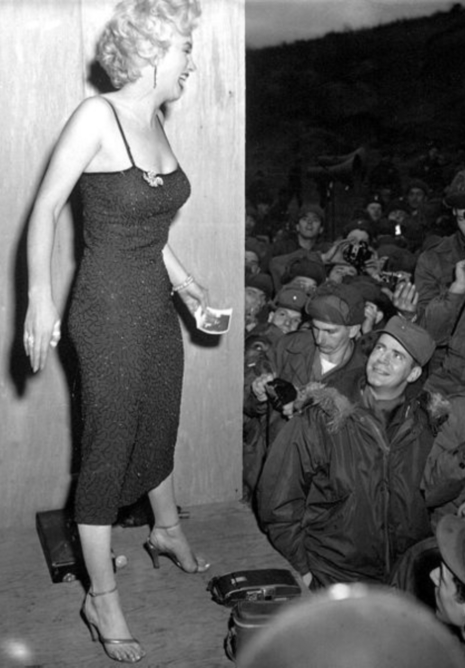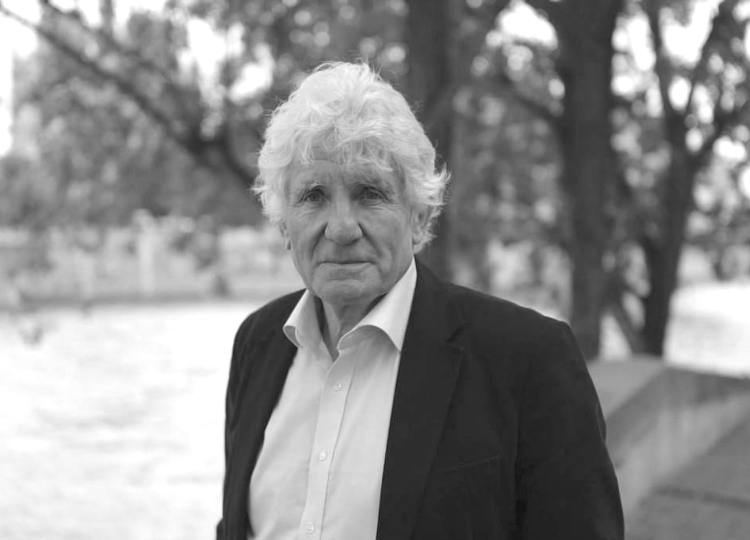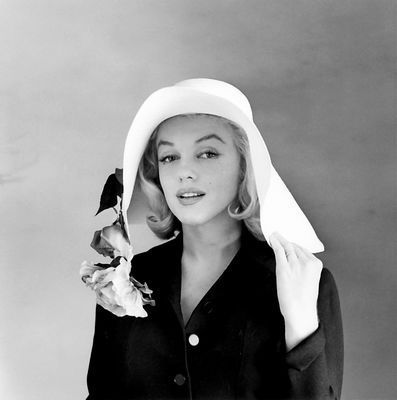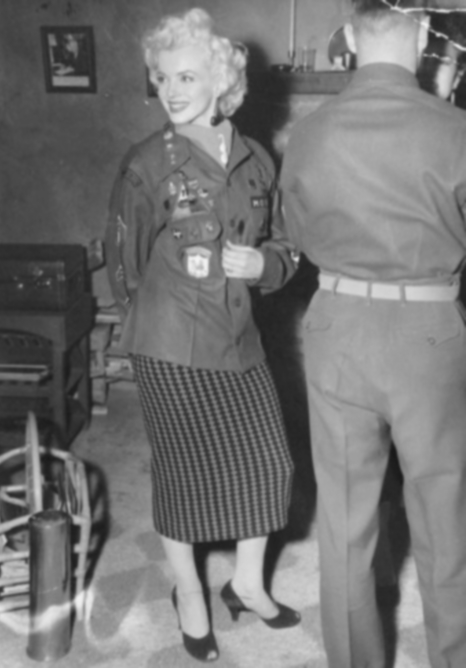Robert Slatzer’s Book, Will Fowler and Frank Capell
I could not establish, with any certitude, based on the information contained in the Fowler Papers, exactly when or exactly where Will Fowler initially encountered Robert Slatzer. Also, exactly how and why the former became involved with the latter remains uncertain because, within his Papers, Fowler described three different versions regarding the how and why of his Slatzer entanglement; however, within the text of his 1991 memoir, Reporters: Memoirs of a Young Newspaperman, Fowler included an author’s note, a brief exposition describing his obscure and curious encounter with Slatzer, an encounter which led to and ultimately concluded with the composition of Slatzer’s faux memoir, The Life and Curious Death of Marilyn Monroe.
Perhaps you, like me, have often marveled at the boldness of Slatzer’s scheme and his Marilyn Monroe nuptial concoction. After all, from where did that brazen idea come? According to Will Fowler, he implanted the seed in Slatzer’s mind, inadvertently implanted a seed that blossomed into an incredibly significant and also lucratively evocative literary fraud that has been sustained for more than fifty years.
During an undated encounter with Fowler, Slatzer unveiled a poorly and hastily written, unfinished article about Marilyn’s death. In Slatzer’s unfinished article, he attributed that unfortunate event to a political conspiracy. During that encounter, which must have occurred sometime prior to August the 15th in 1972, clarified later, Slatzer asked Fowler if the unfinished article could be expanded into a book. Fowler confirmed that Slatzer’s article could be enlarged, provided some pertinent and necessary information could be provided, which Slatzer asserted that he possessed. Fowler then verbally agreed to involve himself with Slatzer’s literary project for the usual speculative fifty-fifty split of all profits and equal writing credit (Fowler 287). Perhaps they even shook hands at that moment and on that day, a momentary symbolic gesture signifying their intent to write a book about Marilyn’s life and her death, a book they planned to entitle, “The Marilyn Monroe Papers.” According to Fowler, he innocently commented to Slatzer: too bad he and Marilyn did not marry: that could really be developed into a very interesting book. Up to that point, it is obvious that Slatzer had not yet mentioned his combustive secret; but Slatzer would soon detonate his explosive and controversial connubial bomb.
Marilyn biographer Donald Spoto, according to his source notes, interviewed Will Fowler on April the 9th in 1992. According to Spoto according to Fowler, not long after the literary partner’s initial encounter, Slatzer contacted Fowler again, saying he had forgot to mention that he had indeed been married to Marilyn (Spoto 229n4); however, in his memoir, Fowler asserted that he was well into writing the book’s first draft when Slatzer mentioned he had been married to Marilyn, but only for a weekend (Fowler 287). It is certainly understandable, then, why Fowler blamed himself for implanting Slatzer’s mind with that marital seed.
A logical question ensues: why would Fowler even accept, even believe such an eyebrow raising, O really revelation, regardless of when Slatzer actually revealed it? To do so seems more than slightly naive and gullible; but in defense of Fowler, his new writing partner produced the now famous photograph of the portly and smiling Ohioan fabulist seated behind Marilyn, his arms wrapped around her in a suggestive embrace. That photograph, which also appears later in this subsection, convinced Fowler that Slatzer at least knew Marilyn, or at least had been in her presence. So, like many others, Fowler was simply misled, fooled and beguiled by that now infamous photograph.
Several additional questions, therefore, present themselves to an inquiring mind; but the most compelling one follows: who actually wrote Slatzer’s exposé on the life and curious death of Marilyn Monroe? If you have an active imagination, like me, perhaps you, also like me, once envisioned Slatzer bending over an old and noisy printing contraption, a sweaty-browed disfigured hunchback, a Quasimodo noisily cranking out his Marilyn Monroe tale, a Kennedy murder orthodoxy, noisily cranking his contraption within the walls of an aging cathedral, perhaps in its dim and dank, dingy and cluttered basement. However, the documentary evidence contained in the Fowler Papers proves, beyond a reasonable doubt and virtually to a mathematical certainty, that Slatzer did not single-handedly crank out the book attributed to him. In fact, a number of men, both known and unknown, cranked that noisy old contraption and could legitimately claim authorship.
The edition of Slatzer’s literary work that I own is entitled The Curious Death of Marilyn Monroe, published by Pinnacle Books, New York City, first printed in 1975 after Slatzer obtained a copyright in 1974. I do not know how the differently titled editions differ textually or even if they differ at all; and I have often wondered: why two differently titled books? The Fowler Papers did not provide a definitive answer to that question; and I admit that encountering the same book that has been published under differing titles is not uncommon in the world of writers and their publishers; but apparently, the informal handshake agreement was not sufficient for Slatzer and perhaps insufficient for Fowler as well. On August the 15th in 1972, each man signed an agreement letter stating that Fowler would retain Slatzer as a public relations counsel, manager, and agent for a book yet untitled, but fictionally will have to do with the life of now deceased Marilyn Monroe, and/or any other book and/or books you [Fowler] will write principally having to do with this subject.1WRFC, Box 23, Folder 26, page 4; Box 23, Folder 27, pages 7 and 13.
So their initial meeting and verbal agreement must have occurred prior to August the 15th in 1972. Later, Slatzer and Fowler formally agreed to equally share any profit generated by book sales and related endeavors. Then, approximately two months later, each man signed a nullifying agreement that superseded the August 15th agreement. The writing partners agreed to mutually produce two books, the first involving Marilyn’s life and death and her sixteen (16) year association with Robert F. Slatzer […].2WRFC, Box 23, Folder 26, page 4; Box 23, Folder 27, pages 7 and 13.The first book would retain the already agreed to title, “The Marilyn Monroe Papers,” now credited only to Slatzer. This revised agreement noted that the second book, published over the by line of Will Fowler and credited only to him, would be fictional, a novel, its working title, “The Beautiful Loser.”3Slatzer titled the opening chapter of his 1974 publication “The Beautiful Loser.”
Prior to procuring Fowler’s Papers, that title dumbfounded me: Marilyn most certainly was not a loser, most certainly not relative to the accepted connotation of that descriptive. If anything, she was a winner; but then, Slatzer was often arrogantly impudent, imbued as he was with his own self-importance.The October agreement retained the equal split of any profit resulting from book sales and related endeavors. A notary named Dianne E. Kissel witnessed the signatures of Slatzer and Fowler on Friday, October the 13th in 1972.4WRFC, Box 23, Folder 26, pages
1 and 18; Box 23, Folder 27, page 12; Box 24, Folder 5, page 5.Soon, another pernicious and prejudicial personality would enter the book composition binge.
Robert Slatzer must have read Frank Capell’s politically motivated diatribe, The Strange Death of Marilyn Monroe, sometime between 1964 and 1972. Capell’s narrative, published in 1964, insinuated that a Communist cabal in cahoots with Robert Kennedy, as I have already noted herein, murdered the blonde actress. According to a document in the Fowler Papers, Slatzer approached Fowler and suggested that he borrow liberally from Frank Capell’s pamphlet. Slatzer, however, did not intend to credit Capell or his pamphlet as a source. Fowler balked at Slatzer’s illegal intent. I told Mr. Slatzer, Fowler noted, that this is a thing called “plagiarism”; that we should not be greedy and share with Mr. Capell. Fowler asserted that he forced Slatzer to this honest decision […].5WRFC, Box 24, Folder 5, page 73.As a result, Slatzer and Fowler invited Capell to join their book writing duo.
The three men entered into a verbal agreement, which they tape recorded; and although the Fowler Papers did not stipulate the exact date of their recorded verbal agreement, the recording must have been made prior to February of 1973, clarified in the following paragraph. Also, Fowler did not clarify if he and Slatzer enacted the verbal agreement with Capell during a face to face to face meeting or during a telephonic meeting with Fowler and Slatzer in California while Capell remained in New York.
On February the 16th of 1973, Will Fowler dispatched a letter to Capell, which read in part: Attached please find notarized agreement (original, signed second copy and unsigned copy for your files). If it meets with your approval, please sign original before Notary Public and return to me at my home […].6Letters published on the website Classic Blondes.
<https://classicblondes.com>Fowler encouraged Capell to attach an addendum stipulating any changes, deletions and/or additions the new writing partner deemed necessary. Along with a response letter to Fowler dated the 20th of February in 1973, Capell returned the unaltered, signed and notarized agreement.7WRFC, Box 24, Folder 5, page 73.
The first article of the agreement read as follows: We are undertaking writing of a work which will have to do with the life, times and death of the late motion picture actress and star Marilyn Monroe, its working title being, The Marilyn Monroe Papers, herein after referred to as the “Work”. Any profit resulting from the Work would be shared equally by the members of this new triumvirate. A notary named Rose A. Shapiro witnessed the signatures of Slatzer and Fowler; a notary named William S. Holcombe witnessed Capell’s signature. An unnumbered article, entitled Individual Responsibilities, enumerated and stipulated the duties and responsibilities as assigned and agreed to by each triumvirate partner.
Capell agreed: 1) to make available within a reasonable time all documents, photos and information in his possession regarding Marilyn Monroe; 2) to allow necessary tracts from his copyrighted pamphlet to be used and/or referred to within “The Marilyn Monroe Papers“; and 3) essentially act as the triumvirate’s editor, to […] guide and advise at his discretion based upon his knowledge […] of the subject, until a completed manuscript could be handed over to an agent and/or publisher for publication.
Slatzer agreed to: 1) furnish to Will Fowler material and information regarding his, Slatzer’s, personal experiences with Marilyn Monroe along with available photos, printed matter, recorded tapes and personal files beneficial to progress and publication of this WORK; and 2) be the public face of the triumvirate by making all reasonable personal appearances to promote this Work with any and all interested members of the media.
Fowler agreed to: 1) write this Work; and 2) make changes in the manuscript and contents of same upon direction and/or suggestion from Frank A. Capell and/or Robert F. Slatzer. The agreement’s Article 7 noted: Robert F. Slatzer will receive full credit for the writing of this Work. Frank A. Capell and Will Fowler’s names will remain secret […] (emphasis mine).8WRFC, Box 24, Folder 1, pages 2 and 3, 18 and 19. Copy of formal agreement between Slatzer, Fowler and Frank Capell.
Finally, in his February letter to Fowler, Capell noted: Under separate cover I am sending you a copy of “Robert Kennedy―A Political Biography,” and I am sending one separately to Mr. Slatzer. The political biography of Robert Kennedy referenced by Capell is a nineteen page pamphlet published by the anti-Kennedyite in 1968. This publication was also known as Robert F. Kennedy―Emerging American Dictator. According to a website that distributes “Radical, Fringe and Extremist Material”, the University of Kansas Archive contains two (2) copies, neither of them for sale. Capell also notified Fowler that he would soon receive a voluminous file in several folders having to do with the Marilyn Monroe case and/or the Kennedys […].9Op. Cit. Classic Blondes. Robert Slatzer wrote to Capell on the 23rd of March and confirmed that Fowler received the folders and files. Having gone through all of your material, Slatzer wrote, it is very revealing and interesting […].10WRFC, Box 23, Folder 27, page 3.
Therefore, both Frank A. Capell, rabid anti-Communist and FBI asset, along with J. Edgar Hoover, Capell’s chum, each an admitted despiser of Robert Kennedy, would soon be involved with writing Slatzer’s book, Capell directly and J. Edgar indirectly through his proxy, Capell. Thus, all that remained was the manuscript’s creation; and all the unfounded imputations aimed at Robert Kennedy, those presented by Capell in his 1964 publication would now, most certainly, also appear in “The Marilyn Monroe Papers,” or, more precisely, The Life and Curious Death of Marilyn Monroe. Based on Fowler’s notations, it is clear that he lifted all of the information pertaining to a Kennedy conspiracy directly from Capell’s 1964 pamphlet; and it is likewise also clear that Capell’s denigration of the middle Kennedy brothers, his paramount agenda, even many years after each man’s awful assassination, found additional expression on the pages of Slatzer’s Maileresque factoidal concoction. In fact, the opening two words of the 1974 narrative, Bobby Kennedy, directly linked with Kennedy’s alleged promise to divorce his wife and marry Marilyn, was the focusing salvo and centralized Capell’s derogatory purpose. And yet, an interesting oddity of Will Fowler’s Papers is this: within the documents I have in my possession, Fowler did not offer any commentary or editorializing about Frank Capell, the man, the Kennedy conspiracist, the anti-Communist or the anti-Kennedy crusader. Fowler only noted that the Kennedy mystery of whether Ms. Monroe had committed suicide, or the Kennedys had assassinated her―all this came from Frank A. Capell’s lengthy (80 pages) pamphlet titled “The Strange Death of Marilyn Monroe,” (Herald of Freedom, 1964).11WRFC, Box 21, Folder 4, pages 9 thru 11.
Remarkably, during Norman Mailer’s interview with Johnny Carson, mentioned earlier in this Section, the novelist evoked the name of Robert Slatzer and Slatzer’s soon to be published book. Of course, when the late night comedian interviewed Mailer in 1974, the novelist could not have known about Frank Capell’s involvement with or his pamphlet’s use in the composition of Slatzer’s artifice. Still, when passed through the prism of what Mailer reported to Carson about Slatzer’s completely thorough investigation into Marilyn’s death and the associated conspiracy, investigative tasks Mailer did not undertake, his praise of Slater’s investigative work when combined with his dismissal of Capell’s pamphlet as apocalyptic, unlikely and surrealistic, in hindsight, approaches a comic irony. Just like Mailer before him, Slatzer did not actually probe the real facts about Marilyn’s connection to Robert Kennedy. Slatzer simply repeated the tale spun by Maurice Ries in late 1962, a tale then expanded and embellished by Frank Capell in his 1964 anti-Kennedy pamphlet. As clarified by the executed agreement between the members of the literary triumvirate, Capell approved directly lifting information from The Strange Death of Marilyn Monroe; and Fowler confessed to doing so. Quite possibly, therefore, more than a few similarities and even direct but unreferenced quotations might be found during a side by side textural comparison of each publication. Even so, I have not performed that comparison. Even so, in the end, then, a fellow must conclude and agree with John Gilmore’s accurate assessment: Robert Slatzer’s ears were most certainly tuned to Norman Mailer’s jingling pockets.



